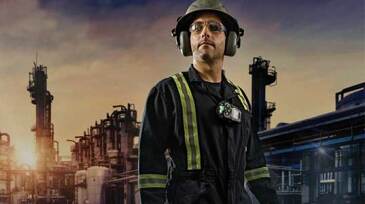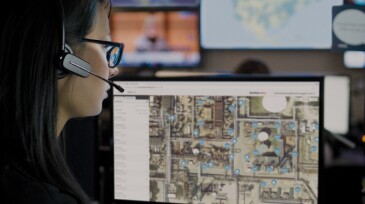wearables
-
Wearable technology aims to take advantage of hands-free functionality to allow workers to perform their duties while maintaining communication remotely with the control room.
-
While personal protective equipment has not traditionally had the technological capabilities to help prevent worker injury due to human error, the latest safety innovations, such as gas detection wearables, can help provide visibility and data-driven insights.
-
The device allows for increased worker safety by monitoring surroundings and connecting to managers in real time.
-
Connected safety is growing, including in the oil patch. And it is tied to the wearable technology so prevalent today.
-
New proximity-based safety process watches the drill floor on board the drillship Deepwater Conqueror.
-
Recent advancements in wearable technologies have opened multiple avenues for innovation. The oil and gas industry can make use of the smart watch, in particular, to monitor the health of oilfield workers.
-
Wearable devices can notify workers of hazards, provide useful safety data to employers, and improve safety on the worksite.
-
A field service technician inspects an iron roughneck while equipped with the TrackerVision technology, streaming a live feed to an offsite expert.
-
Honeywell's hands-free, wearable Connected Plant technology allows industrial workers to more safely, reliably, and efficiently accomplish their tasks in the plant or the field. The Skills Insight Intelligent Wearables feature a head-mounted visual display that responds to voice and brings live data, documents, work procedures, and health and safety information into v…
-
Wood has developed new camera technology that can stream video and store data from remote work locations including offshore, in partnership with Canadian technology company Librestream Technologies. The Onsight Cube is a rugged camera that can be worn on a helmet, chest mount, or a monopod to access high or difficult-to-reach areas, and connects wirelessly via Bluetoo…










